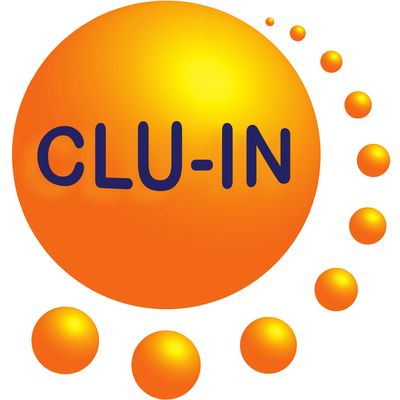Since 1998, The Contaminated Site Clean-Up Information (CLU-IN) website has presented Internet Seminars covering a wide variety of technical topics related to hazardous waste characterization, monitoring, and remediation. For each seminar topic, we have selected the highest-quality offering for placement in our archives. Beginning in May 2005, we began offering these archives via podcast, and this feed contains all seminars archived in the last 6 months. For a complete list of seminars archived since 2000 and videos of selected seminars archived since 2012, please visit http://clu-in.org/live/archive/. Our Rehabilitation Act Notice for reasonable accommodation is available at http://clu-in.org/training/accommodation.cfm. CLU-IN was developed by the U.S. Environmental Protection Agency (EPA) but is intended as a forum for all waste remediation stakeholders. For more information and to view upcoming live offerings, please visit http://clu-in.org/live/. For a complete list of RSS feeds available on CLU-IN, please visit http://clu-in.org/rss/about/.
http://www.clu-in.org/live/archive
Gesamtlänge aller Episoden: 14 days 9 hours 4 minutes
Audio for "Use and Measurement of Mass Flux and Mass Discharge," Mar 10, 2016
Most decisions at groundwater contamination sites are driven by measurements of contaminant concentration -- snapshots of contaminant concentrations that may appear to be relatively stable or show notable changes over time. Decisions can be improved by considering mass flux and mass discharge...
Audio for "Remedy Selection for Contaminated Sediments," Feb 25, 2016
The sediments underlying many of our nation?s major waterways are contaminated with toxic pollutants from past industrial activities. Cleaning up contaminated sediments is expensive and technically-challenging. Sediment sites are unique, complex, and require a multidisciplinary approach and often project managers lack sediments experience...
Audio for "Groundwater Statistics for Environmental Project Managers," Feb 18, 2016
Statistical techniques may be used throughout the process of cleaning up contaminated groundwater. It is challenging for practitioners, who are not experts in statistics, to interpret, and use statistical techniques. ITRC developed the Technical and Regulatory Web-based Guidance on Groundwater Statistics and Monitoring Compliance (GSMC-1, 2013, http://www.itrcweb...
Audio for "Environmental Molecular Diagnostics: New Tools for Better Decisions," Feb 4, 2016
Environmental molecular diagnostics (EMDs) are a group of advanced and emerging analytical techniques used to analyze biological and chemical characteristics of environmental samples. Conventional data (e.g., hydrogeological data, chemical, and geochemical analyses) often provide only indirect data regarding the mechanisms and rates of key attenuation or treatment processes...
Audio for "Issues and Options in Human Health Risk Assessment - A Resource When Alternatives to Default Parameters and Scenarios are Proposed," Feb 2, 2016
Many state and local regulatory agencies responsible for the cleanup of chemicals released to the environment have adopted regulations, guidance and policies that define default approaches, scenarios, and parameters as a starting point for risk assessment and the development of risk-based screening values...
Audio for "Evaluating LNAPL Remedial Technologies for Achieving Project Goals - Part 3," Jan 28, 2016
Light non-aqueous phase liquids (LNAPLs) are organic liquids such as gasoline, diesel, and other petroleum hydrocarbon products that are immiscible with water and less dense than water. Understanding LNAPLs is important because they are present in the subsurface at thousands of remediation sites across the country and are often the sole reason why a site remains open...
Audio for "LNAPL Characterization and Recoverability - Improved Analysis - Part 2," Jan 26, 2016
Light non-aqueous phase liquids (LNAPLs) are organic liquids such as gasoline, diesel, and other petroleum hydrocarbon products that are immiscible with water and less dense than water. Understanding LNAPLs is important because they are present in the subsurface at thousands of remediation sites across the country, and are often the sole reason why a site remains "open...
Audio for "An Improved Understanding of LNAPL Behavior in the Subsurface - State of Science vs. State of Practice - Part 1," Jan 21, 2016
Light non-aqueous phase liquids (LNAPLs) are organic liquids such as gasoline, diesel, and other petroleum hydrocarbon products that are immiscible with water and less dense than water. Understanding LNAPLs is important because they are present in the subsurface at thousands of remediation sites across the country, and are often the sole reason why a site remains "open...
Audio for "Geophysical Classification for Munitions Response," Jan 14, 2016
For decades, the U.S. Department of Defense (DOD) has produced and used military munitions for live-fire testing and training to prepare the U.S. military for combat operations. As a result, unexploded ordnance (UXO) and discarded military munitions may be present at over 5,200 former ranges and former munitions operating facilities throughout the United States...
Audio for "Regional Water Availability and Superfund: Generating a Valuable Resource at Phoenix-Goodyear Airport Area," Jan 13, 2016
Webinar participants will learn how Superfund site cleanups can play a beneficial role in areas with limited water availability through a case study highlighting the reuse of treated groundwater at the Phoenix-Goodyear Airport Area Superfund site in Goodyear, Arizona...
